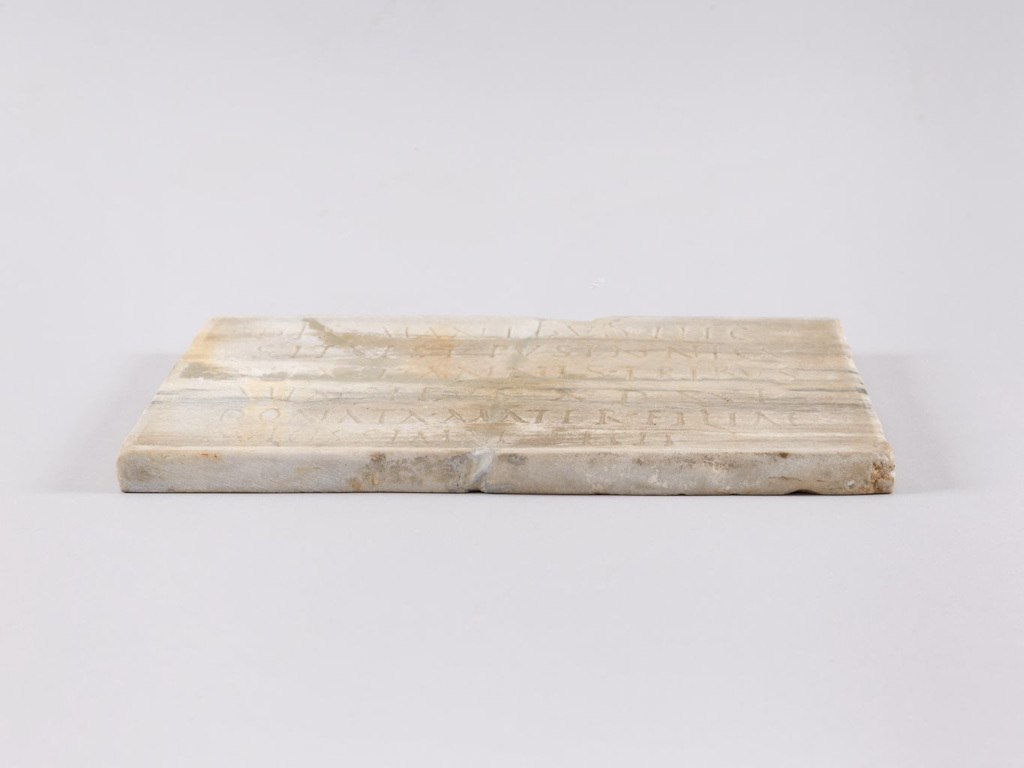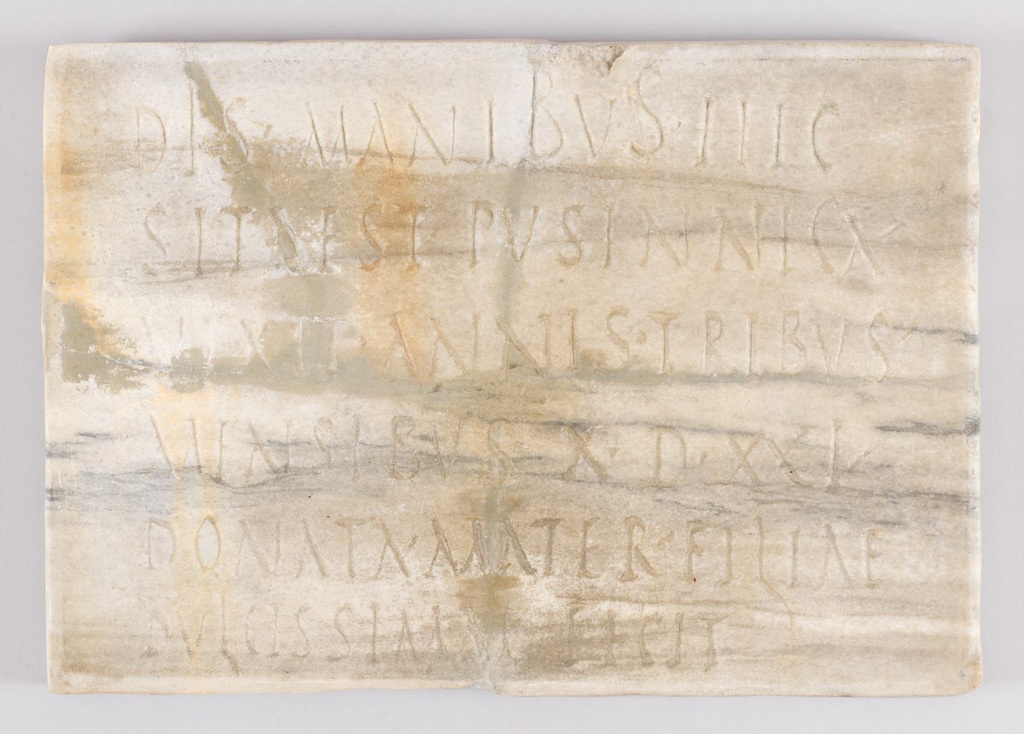This small gravestone belonged to a young girl, Pusinnica, who died before her fourth birthday. The six-line Latin inscription indicates her name, her age, her disposition as a very sweet child, and her mother’s name, Donata. Her grave was uncovered in 1882 along the side of a road just 600 meters outside of Sousse, Tunisia, ancient Hadrumetum. It was discovered together with other graves and evidence of a Roman villa. Unfortunately, many children died young in antiquity and expressive inscriptions such as this demonstrate the pain of those losses. Pusinnica, while not a common name, is attested to in other Imperial Roman (1st–5th centuries CE) contexts in North Africa.
The marble slab would have covered an ossuary, which may have contained some additional small grave offerings. The archaeological reports from the 19th century indicate that terracotta lamps, small terracotta vases, and glass vessels were found in the graves, but mostly without clear associations to specific graves. At least one terracotta lamp, featuring a figure riding in a four-horse chariot, raising a wreath in one hand, and holding a palm branch in the other (whereabouts unknown today), was found in the soil near Pusinnica’s grave with an inscription featuring the same unusual form of A as in her funerary inscription.
The minor cemetery by the villa most likely represents a family graveyard for a suburban household. Villas outside of the city limits, but close enough for trade, would have been integral to growing and exporting agricultural products from the region. In particular, Hadrumetum was vital for the Roman grain supply. The city also had workshops producing terracotta and glass products, such as those found at the gravesite. The inhabitants of Hadrumetum gained full Roman citizenship during the reign of the emperor Trajan (98–117), and this gravestone dates to around that time. It can be dated by the use of the interpunct (the dot between words) in the Latin inscription, which was in use in the 1st or 2nd century CE and stopped being used by the 3rd century. The mosaics from the villa, today dispersed between the Louvre Abu Dhabi, the Bardo National Museum in Tunis, and the Sousse Archaeological Museum, however, date to the early 4th century. Thus, the graveyard indicates the multigenerational existence of the family in the area during the Roman Imperial period.


